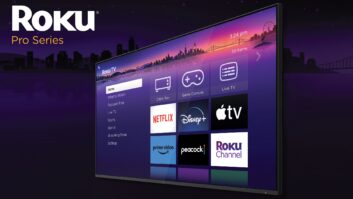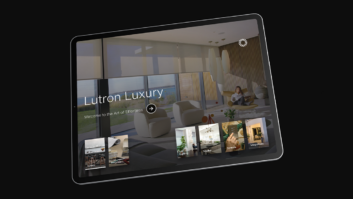As a residential custom integrator, our main focus is to maintain a rock-solid home technology experience for our clients. The vast majority of our clients are Comcast subscribers, and while Comcast has made strides to accommodate the custom industry, we are often forced to work with set-top boxes and other equipment that has not been vetted or designed to work with the complicated systems we provide.

Mat Lindstedt ([email protected]) is owner of Silicon Valley Installation Company in San Jose, CA
To work around these issues, we’ve specified TiVo for many years. We like that we can sell TiVo equipment and incorporate their offerings in our designs. Most control systems have IP drivers that work well with TiVo, and we are not held hostage by Comcast equipment changes and unannounced swap outs of set-top boxes that render our systems inoperable.
Nevertheless, TiVo still has many challenges integrating with Comcast. Just because the government requires Comcast to support TiVo and CableCards, it doesn’t mean Comcast has to like it. It sometimes takes hours of effort and many phone calls to get Comcast synced up to TiVo, and to keep TiVo from dropping off the network.
Help appears to be available, however, with Comcast’s new “Xfinity partner app,” which allows Comcast to control the experience, while the installer can control the content source device.
Meet the Comcast App on Roku
In a perfect installation world, we wouldn’t have any audio/video sources connected to displays. We would incorporate all viewing choices into easy-to-use apps, either via the TV or one dedicated set-top box.

Comcast’s beta Xfinity partner app on a Roku 3
It took me less than 10 minutes to install Comcast’s beta Xfinity partner app on a Roku 3, and then immediately I could view the full X1 platform on my Roku–live streaming channels, cloud recordings, video on demand–via a single user interface.
Roku customers can find the app (set to release “later this year” for an unspecified price) in the Roku Channel Store, and Samsung customers will find it in the Samsung Smart Hub shortly. The installation is quick and simple. Soon after installation the familiar X1 interface will appear as another stream on your Roku. The look and functionality are the same as with Comcast’s set-top box, except that the ability to rent or buy programming or play back previously purchased programs will have to wait until the app is launched.
Comcast plans for the final app to require only an eligible Roku device and a compatible IP gateway, but during the beta phase a Comcast-provided set-top box or CableCARD is still required (in other words, they are still working on creating compatible IP gateways that do not use the Xfinity modem). Users must also subscribe to Xfinity TV or Stream TV.
Rather than use QAM broadcasting, the service is instead delivered over Comcast’s locally managed network as IPTV, which allows users to watch their other Roku streams without having it count against their Comcast data usage limit. Live TV, on-demand programming, and cloud recordings also do not count against the data threshold.
Some Pros and Cons and Unknowns
As for cons, let’s start with the Roku remote control. It was designed for the Roku box, not a full-service cable system, so it has no numbered keypad. I have tested the app using Control4 and was able to get a fully functional remote working.
The most annoying issue is the three to four seconds of latency between every Xfinity command. Comcast will have to address that before the official launch of the final app. Second on my list is the lack of control buttons on the app’s interface. It has five buttons–Saved, Live TV, On Demand, Search, and Settings. Users familiar with the main Roku interface, TiVo, or even Xfinity as delivered by a set-top box, will need more to be satisfied. All of the content should be integrated and easy to access from one screen. Folks want voice control, too.
Some products never make it out of the beta phase because of technical challenges, pricing challenges or lack of interest. In the cable industry, changes in regulation can also kill a product in beta. Comcast has already made some waves with its inconsistent communication about the expected functionality and pricing upon launch. We will have to wait and see what sacrifices they make to the features or the interface to get over the more obvious flaws such as latency.
The potential is there. Now we need to see if Comcast can deliver on its promises.







